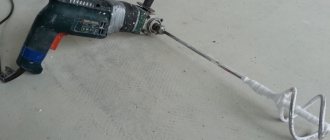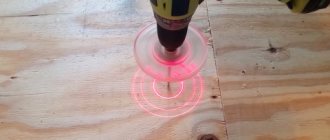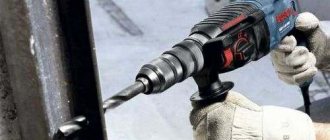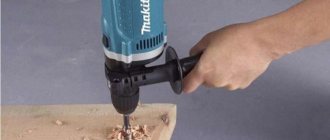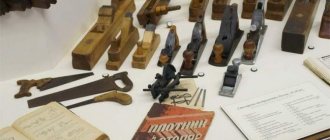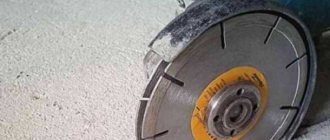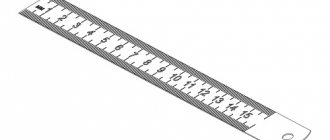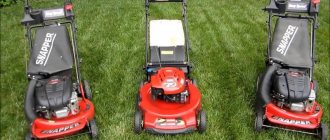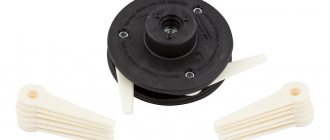When it becomes necessary to drill holes in concrete or stone, you will need to use a special tool. For such purposes, not only drills, but also hammer drills are produced. These are completely different devices that have external signs of similarity. What is better to choose - an impact drill or a hammer drill for drilling concrete, and what differences do these tools have? These issues need to be examined in more detail.
Impact drill and hammer drill - what are these tools for?
To find out what the difference is between an impact drill and a hammer drill, you need to find out their functional purpose. Let's look at each tool separately:
- An impact drill or hammer is a popular type of electric tool that almost every craftsman has. It can be used to drill holes not only in metal and wood, but also in concrete. To drill through durable concrete, the device must be in the hammer drilling mode, otherwise the drill will not penetrate deep into the material. If the tool does not have an impact mode, then it is not intended for drilling concrete, brick and stone
- A rotary hammer or drill hammer is a professional type of tool that is designed directly for carrying out slotting and drilling work on concrete. Pistol-type devices have a mode switch, among which there is a drilling function. Enabling this mode allows you to use the tool to drill holes in metal and wood. However, the main purpose of the tool is to work with high-strength materials such as concrete, stone, brick, etc.
When a master drills a hole in concrete with an impact drill, he needs to apply pressure to the tool. Moreover, the amount of effort directly affects the speed of obtaining results. Unlike an impact drill, a hammer drill does not need to apply pressure, so the master can only guide the tool and hold it.
This is interesting!
If a hammer drill is a tool for processing concrete and brick, then a drill is more intended for working with metal and wood. Only often in everyday life does it become necessary to drill a hole in a concrete or brick wall. In order not to buy a separate tool for this, manufacturers have equipped electric rotators with an impact drilling function. Thanks to this mode, you can quickly and efficiently drill a hole in the wall for a dowel.
Differences between a drill and a hammer drill
The main difference is the impact mechanism system
The most significant difference between a hammer drill and an impact drill is the operating principle of the impact system. So, in a drill, two gear mechanisms - ratchets - are used to generate a blow. The tool chuck is rigidly connected to the first of them, and its body is connected to the second. When the impact mechanism is not needed, a stopper is inserted between the ratchets and there is no contact between them. When the impact mode is turned on, the stopper is removed, and the gear train converts the rotary motion of the cartridge into a reciprocating motion.
This process is simply perfectly shown in the following video clip, despite the fact that the announcer in the video constantly calls an impact drill a hammer drill, in fact, the video shows the operation of a regular impact drill. It’s just that how do translators and announcers know the difference between a drill with an impact function and a hammer drill, they haven’t read our article :).
Video: Operating principle of an impact drill
With a hammer drill everything is different. The impact device can be either electromechanical or electropneumatic. The first type is most often used. In this case, there are two coils that, through electromagnetic interaction, cause the core to move back and forth. Next, the energy is transferred directly to the working part of the hammer drill.
The pneumatic mechanism can be of two types. Equipped with a crank drive or a system with a so-called “drunk” rolling bearing. In the latter case, the rotating rotor drives the piston, which transmits the shock energy to the working part.
Video: Drunk bearing impact mechanism
Well, the crank-type mechanism transmits its rotational energy using a piston, which pushes the working part of the hammer with compressed air.
Video: Impact crank mechanism
Functionality is important
In this regard, the hammer drill is significantly ahead of the drill - after all, it has three operating modes. This is a spin kick, a spin kick, and just a kick. Accordingly, using an electric hammer drill you can not only drill a wall, but also break through it. Hollow out a large hole, make a groove for a cable, break off a piece of a wall - all this can be done with such a powerful tool as a hammer drill. But a drill with an impact mechanism has only two modes - standard drilling and drilling using impact. Moreover, the force of this blow is not as powerful as that of a hammer drill.
We recommend: Assembling a laser level from scrap materials
What are the differences between the main characteristics?
For electric drills, the main characteristic is torque, or torque. The unit for its measurement is Newton meter. Rotary hammers are classified according to a different criterion. For them, the main thing is power, which depends on the impact energy. This value is measured in joules. And the torque of a hammer drill should not be large at all; it is often much less than that of an impact drill with a motor of similar power.
Leader in Performance
And then the hammer drill breaks forward again. After all, its impact energy is undoubtedly greater than that of an impact drill. Therefore, working with a hammer drill is much more comfortable - you don’t have to press on it as hard as on an impact drill. When working with the latter, it will be extremely difficult to punch a hole without significant pressure.
Main Application
For a drill, the main area of application is work on drilling metal, tiles and wooden surfaces. Well, the hammer drill is designed to overcome concrete and brick walls. Therefore, both in terms of hours or minutes spent and in terms of quality, it is difficult to compare the result of work performed by one and another tool. After all, for a drill, the impact function is only an additional one. However, just like the drilling functions of a rotary hammer. Do not neglect the instructions, using the tool “to the fullest” where only short-term use is allowed. It will end sadly - a good thing will break.
What are the differences between an impact drill and a hammer drill - let's look at them in parts
If the distinguishing feature of the purpose of rotary hammers and impact drills is insufficient information, then it is necessary to analyze these tools by disassembling them into their component elements. Knowing the differences in design will be useful in order to choose the most suitable tool for the relevant work.
The instruments under consideration differ in the following structural elements:
- Impact mechanism
- Operating modes
- Tool weight
- Equipment
- Performance
- Price
Let's take a closer look at impact drills and rotary hammers based on the above-mentioned structural elements, and find out when it is better to use the first version of the tool, and when the second.
Differences in the design of the impact mechanism
The main difference between an impact drill and a hammer drill is hidden inside. More precisely, the design of these instruments uses completely different types of impact mechanisms. Moreover, the mechanisms differ not only in appearance, but also in the force of impact.
- On the hammer drill, the impact mechanism is implemented through electro-pneumatic and mechanical units. Moreover, the design of the impact mechanism on direct and barrel type devices is different. Direct type devices use a driven bearing that drives the piston. A piston moving in a sealed chamber uses the energy of compressed air to act on the firing pin, thereby moving it. The striker, under the influence of compressed air energy, acts on the back of the drill fixed in the device chuck. On barrel perforators, instead of a driven bearing, a gear is used, to which a rod connected to a piston is attached. The gear and bearing are driven by an electric motor. The impact mechanisms of rotary hammers are reliable, and due to such a complex design, they are capable of developing an impact force from 2 to 20 Joules
- Impact drills have a simplified design of the impact mechanism. It is implemented through the use of two ratcheting devices that are connected to the shaft and chuck of the tool. The shock mode occurs due to the fact that the bushings jump over each other, creating corresponding clicks. This type of mechanism is also called a ratchet mechanism. Screwdriver force regulators have a similar device. The maximum impact force of such devices does not exceed 2-3 Joules
Based on the above, it should be noted that you can drill a hole in concrete with a hammer drill very quickly. The drill will also cope with this task, but with a slight delay. Moreover, the delay time directly depends on factors such as the type of material, thickness, depth of the hole being drilled, as well as power. If you need to drill a hole with a diameter of more than 10 mm in concrete, then it is better to use a hammer drill for this purpose.
This is interesting!
You can drill a 10 mm hole in concrete with a drill, but the life of the impact mechanism will be significantly reduced with each opening.
What can you choose: an impact drill or a hammer drill?
- The tools allow you to punch holes in a variety of materials, including wood, metal, and masonry. To drill concrete you will need the most powerful one, that is, a hammer drill.
- Using special attachments at low speeds of the tool, you can tighten screws, self-tapping screws and self-tapping screws.
- The more power the impact drill has, the easier it is to make a hole. But usually, as power increases, the tool becomes heavier.
- Using additional devices, you can use electric drills as a grinder or grinder.
- If you use the tool carefully, it will last quite a long time. Correct use includes, for example:
- short-term operation of the device up to 35-40 seconds;
- use of high-quality sharp drills;
- taking into account the conditions in which you will work.
Rotary hammers with a power of 800 to 1500 kilowatts and a weight of 2 to 11 kilograms usually have slightly larger dimensions than impact drills. In such devices, the motor can be located either horizontally or vertically. In addition, many are equipped with SDS cartridges. The technical specifications of instruments usually indicate the frequency of blows per minute and their force. Low-power devices usually have adjustable speed, allowing them to be used as a screwdriver.
What operating modes are present on the instruments?
The differentiating feature between an impact hammer and a hammer drill lies in the functionality of these tools. The design of hammer drills has three operating modes, due to which it is possible to process not only concrete. These modes have the following names and purposes:
- Drilling - the regulator must be turned towards the drill image. When this mode is enabled, the tool will operate in drilling mode. When this mode is turned on, the impact mechanism is turned off, and rotational energy from the electric motor shaft is supplied to the cartridge through a gear mechanism. In this mode, you can not only drill metal or wood, but also mix various building mixtures
- Rotation with impacts - the adjuster must be set towards the designation of the drill with a hammer. In this mode, the tool drills concrete, brick, reinforced concrete and stone materials. To implement these actions, you need to install a drill in the tool chuck
- Drilling - the control switches to the hammer designation. In this mode, the hammer drill is a jackhammer that can be used to remove tiles, drill concrete, brick, etc.
Unlike rotary hammers, percussion instruments have two operating modes. This is three times the difference between an impact drill and a hammer drill. The first mode of the tool is the main one - drilling. An electric drill is used to drill holes in metal, plastic, glass, and wood. If you need to get a hole in concrete, you need to turn on the impact drilling mode. Even if this function is available, it is not recommended to actively use the tool for drilling concrete.
This is interesting!
The
regulator
on drills is often located in the upper part of the tool near the chuck. On rotary hammers, the mode switching regulator is located on the side.
Criteria for choosing a household electric drill
When choosing an electric drill, you should focus on its purpose, power and additional capabilities.
When choosing a drill for your home, you should consider its main characteristics
For home and garden use, it is recommended to choose household electric drills. They are significantly cheaper than professional tools, are compact in size, light in weight, and have comfortable ergonomics.
Engine power
An important characteristic of a drill is motor power. The more power, the more dense materials the drill can process. The table shows materials of various thicknesses and the recommended engine power for working with them.
Table: processed materials and recommended tool power
| Type of material and its thickness | Recommended power, type of drill |
| wood up to 80 mm; concrete up to 30 mm; steel up to 25 mm. | 1800 - 2000 W, impact drill |
| wood up to 50 mm; concrete up to 20 mm; steel up to 16 mm. | 1000 - 1200 W, impact drill |
| wood up to 40 mm; concrete up to 16 mm; steel up to 13 mm. | 700 - 800 W, impact drill |
| wood up to 25 mm; concrete up to 13 mm; steel up to 10 mm. | 450 - 650 W, impact drill |
| wood up to 10 mm; steel up to 6 mm. | up to 300 W, hammerless drill |
Shaft speed
Most household work is performed at a rotation speed of the working tool of 2500–3000 rpm. If there is a speed regulator that reduces it to 500 rpm, this drill can be used for screwing screws, screws, and self-tapping screws. The speed can be adjusted in different ways: with a slider, an adjusting screw, or by pressing the power button. The higher the speed, the smoother the walls of the finished hole will be. Grinding and polishing are also performed at high speeds.
Drilling diameter
The drill's passport indicates the maximum diameter of the drill for the different materials it can work with: wood and steel. A drill with an impact mechanism adds concrete, stone, and brick. So a 550 W drill drills holes up to 10 mm in metal, and up to 20 mm in wood. The minimum diameter of clamped drills is determined by the jaws of the chuck and is 1 mm.
We recommend: How to use a caliper - we will teach everyone
Chuck type
All drill chucks are divided into quick-release chucks (clamped by hand) and key chucks (clamped with a special key). Keyless chucks are convenient for frequent changes of working tools: drill - reamer - countersink and other combinations. But they do not clamp the drill shank securely enough, so when working with hard materials the drill may stop. Most often, this type of chuck is used on household hammerless drills. Hammers and heavy-duty drills use only key chucks. For home purposes, chucks that can work with drills with a diameter of 1 to 16 mm are suitable.
Additional functions
When choosing an electric drill for your home, it is recommended to take into account the presence of additional functions:
Speed shifter. A convenient function when drilling holes in materials of different strengths, as well as when changing the type of work, for example, from drilling to tightening screws. Electronic speed control. Most often it is produced by a start button, which is connected to a rheostat or thyristor. The main advantage is the smooth change in speed. The speed changes depending on the force on the button: more force - the speed increases; less force - speed decreases. Some models are equipped with an adjustable drive. In this case, the drill itself automatically selects the rotation speed depending on the hardness of the material. Smooth start. This function allows the drill motor to gradually, without jerking, spin the drill from low to high speeds. The starting current of the commutator motor is reduced and drilling accuracy is increased. Fixing the start button. A useful feature that allows you to use a drill during grinding and long-term drilling. You don't have to constantly keep your finger on the button for the motor to work.
Equipment
When you come to the store to buy a drill, you should examine its configuration. Different manufacturers package their models differently. Preference should be given to those drills that include spare parts and components (for example, brushes for an electric motor and a chuck), work accessories (drilling depth limiter), working tools (a set of drills) and other useful items. A plastic suitcase is very convenient - the tool will not become dusty and parts will not be lost.
Other important criteria
Before making a final decision on purchasing a drill, it is recommended to study the instruction manual and become familiar with the technical characteristics. You should definitely take the instrument in your hands to feel how it feels. Will it be convenient for them to work? Doesn't it slip? Is it heavy? Touch and try to turn on all the buttons, switches, knobs. Evaluate the smoothness of switching on, moving, and fixing.
The drill chuck should not be loose
The chuck in which the drill is clamped is secured in a ball bearing. In a cheap tool, the bearing may not be assembled tightly, causing the chuck to dangle along or across the drilling axis. Take the drill in your hands and rock the chuck back and forth and to the sides. In a high-quality tool, the free play (or play) will not exceed two to three millimeters.
Video: Choosing an electric drill
1
Impact drill and hammer drill - differences in functions
It would seem that for both tools the nozzle performs translational movement under the action of the mechanism, and there is no significant difference between them. But this is only at first and completely inexperienced glance - the main difference is in the design of the unit that pushes the firing pin. In a drill, this block is called a gear ratchet, which, when pressed at a certain level, rotates and pushes with its teeth the protrusions of another similar pair mounted on the chuck rod. For this reason, the amplitude of drill impacts during operation is quite small and serves only as an auxiliary force for passing difficult areas. In order for the kinetic moment to give a positive result when drilling, it is necessary to apply very high pressure to the tool.
This function also has a downside - the harder the operator presses on a drill with an impact mechanism, the faster the ratchet teeth wear out. It is strictly not recommended to try to gouge holes in concrete with this tool, including if a Pobedit drill is used as an attachment. It is better to work in drilling mode, otherwise such an operation will lead to rapid wear of the gearbox. The maximum that even a professional model can do is drill a deep hole for a screw or cartridge in a brick wall, silicate or cinder block, because its attachment drills by layer-by-layer cutting or scraping out particles of material.
We recommend: How to choose a high-quality electric jigsaw for the home - we cover it carefully
A hammer drill drills, breaking bonds in the structure of concrete or brick, but if you need holes in wood, it can also replace a drill in the drilling mode, but this tool is not suitable for metal. The translational movement of the nozzle is carried out by means of a mechanical, electromagnetic or pneumatic unit. In the first case, the work is performed by a swinging bearing, which popularly has another name - drunk. It pushes the piston, which creates compression and thereby gently acts on the firing pin. The second option operates using induction coils, and in the third, the pressure on the piston is provided by compressed air. Any of the listed components does not tolerate pressure on the tool, even weak ones; because of them, the pushing mechanism will work worse.
We recommend
How to choose a drill for the home - we take into account all the features. Choosing a hammer drill - determining the basic requirements for the tool. Choosing a hammer drill - determining the basic requirements for the tool.
How much do impact construction tools weigh?
One cannot fail to note such an important distinguishing factor as the weight category of the instruments. The rotor is not only small in size, but also light in weight. This is due to the use of a low-power and high-speed electric motor capable of reaching speeds of up to 4000 rpm.
Rotary hammers are equipped with more powerful electric motors that develop low speed, but at the same time have high torque, which directly affects their weight category. Drilling devices are divided into three types by weight:
- Lightweight - up to 4 kg
- Medium - up to 6 kg
- Heavy - from 6 kg. These are barrel perforators, which, in addition to working mechanisms, have a special compartment for pouring liquid oil
The most powerful impact drill weighs no more than 4 kg. Light weight simplifies the operation of the tool, but not in all cases. When it is necessary to drill through concrete, the weight of the tool plays a big role. If, when drilling, the hammer needs to be pressed firmly against the surface of the material being processed, then the drill hammer does not need such actions.
Contents and types of fasteners
To understand how else a drill hammer differs from an impact drill, you need to pay attention to the fastening element. Drills and rotary hammers use completely different types of fasteners, which are designed to fix actuators - drills and augers.
Cam-type chucks are installed on the impact rotator. They are also called collet chucks, which consist of three cams that move simultaneously when the holder rotates. Chucks of this type are designed for fixing nozzles with cylindrical and hexagonal shanks. The cams compress the shank of the nozzle at three connection points, and thereby ensure its reliable fastening.
Rotary hammers use completely different chuck mechanisms. They are based on the quick-clamping principle of fixing the nozzle. The main feature of drill hammer chucks is that the attached attachment has the ability to move freely vertically. This free movement is necessary to generate impact force with the tool. Quick fixation of the nozzles in the hammer drill chuck is carried out by a ball that engages with a groove in the tail part of the nozzle.
Since these tools use different types of cartridges, the installed attachments will also have corresponding differences. The main difference lies in the design of the tail part of the nozzles. Conventional concrete drills are installed on the rotators, and drills are available for the rotary hammer. Outwardly, they are similar to drills for concrete, but the difference is that on the shank of the drills there are 2 open and 2 closed grooves.
This is interesting!
For impact drills, drill bits for concrete are not available with a diameter of more than 12 mm. The maximum hole size that can be drilled in concrete with this tool is 10 mm.
How does a hammer drill differ from an impact drill in structure and purpose?
- Impact mechanism structure
- Performance and functionality
- Tool holder
- Some other points
When performing construction work, two tools are often used: #8211 impact drill and hammer drill. They are considered similar, but at the same time they should be distinguished, since there are differences, and there are many of them. Therefore, you should decide what is the difference between a drill and a hammer drill, what are their features and principles of operation.
Technical differences between rotary hammers
Rotary hammers, in turn, have a wider profile of work. For the most part, they are intended for the manipulation of hard material for destruction, for which rotational movements are not sufficient, i.e. this tool has the ability to perform reciprocating striking actions. This is necessary for the destruction of such durable materials as: concrete, stone, gypsum, brick, asphalt. Rotary hammers have similar principles of transmitting energy to the rotary body as drills, but they need more power to perform both rotational and impact actions. It is possible to switch modes: rotational, impact, impact-rotational. There is a rotation speed regulator. Just like a drill, there is a chuck, but here there is the opportunity to use various adapters, adapters for quickly changing tools: SDS-max, SDS-plus, and SDS-top, they all have locking grooves and clamps for reliable fastening.
This versatile tool can be fitted with a jaw chuck that will hold regular drill bits. The main difference between a drill and a hammer drill lies in the internal organs.
Tool holder
The difference between an impact drill and a rotary hammer lies in the method of attaching the tools used. For the first mechanism, there are a large number of attachments, which increases the functionality of the device. At the same time, for an impact drill there is a drill with pobedite surfacing.
The drill and drill are secured in both mechanisms in chucks. However, the design of this element in both devices has a number of differences. To quickly change tools, the hammer drill uses a special clamping system.
Diagram of the hammer mechanism of a drill.
At this time, the drill is fixed in the chuck using specially shaped grooves. In addition, the tool used in a hammer drill has a certain degree of freedom in terms of its relationship to the chuck. This helps reduce the load placed on the tool during impact.
To use a conventional drill, you must use an adapter or change the chuck to a jaw type. In some models, this process occurs quickly, which is due to the presence of a special fastening system. If an adapter is used, the result is a design represented by the connection of two cartridges. But such a connection has one drawback, which is the beating of the drill during rotation and the slight rigidity of the fastening.
Distinctive features of an impact drill
Cordless drill diagram.
Recently, a large selection of impact drills have appeared on the construction tools market; their purpose is similar to rotary hammers in almost everything, but there is still a difference
in the internal elements of these devices. The first thing people pay attention to is the principle of transmission of impact force. In rotary hammers, energy is transferred from the rotor to the crank mechanism, which interacts with a reciprocating piston, which pumps atmospheric pressure into the chamber where force is transferred to the ram, the latter accelerates and through the hammer gives energy to the chisel, drill, crown, drill.
In contrast
from a hammer drill, in impact drills all these machinations occur in a simplified form; when the impact mode is turned on, the rotor of the electric motor rotates a ratchet (a gear with small tubercles on the perpendicular plane of rotation), which in turn interacts with a similar ratchet fixed to the body, thereby creating reciprocating movements. When this mode is turned off, the ratchets move away from each other and the drill continues to operate as normal.
Tool and its fastening
The impact drill tool used for drilling concrete walls is most often a drill with pobeditovy surfacing.
In hammer drills and drills, drills and augers are mounted in chucks, but their design is very different in hammer drills and drills. To quickly change tools, rotary hammers use a tool clamping system SDS-plus, SDS-max and SDS-top (depending on the diameter of the shank, read more about rotary hammer chucks in the article Rotary hammer). Fixation in the cartridge occurs using specially shaped grooves.
READ How the Drill Speed Controller Works
In a hammer drill, the tool has a certain degree of freedom in relation to the chuck in the axial direction, which allows reducing the load on the hammer during impacts.
In order to use a regular drill in a rotary hammer, you must either use a special adapter or change the chuck to a cam one. In a number of models, thanks to a special fastening system, changing chucks is easy and quick, while a chuck for a regular drill should be included in the hammer drill kit. When using an adapter, a design of two cartridges connected in series is obtained. SDS and three-jaw. The disadvantage of this option is the lack of sufficient rigidity of the drill attachment and its beating when rotating.
Performance
With the same power of tools, the diameter of the hole that can be obtained using a hammer drill is approximately 1.5 times larger than the diameter of the hole obtained using an impact drill. The difference increases even more if a crown is used for drilling.
What productivity do the tools have?
Due to the fact that the hammer drill is equipped with a powerful electric motor and a more advanced impact mechanism, it has high productivity. Impact-type rotators are inferior to rotary hammers, and in addition to low productivity, they are not yet designed for long-term use in impact mode.
Rotary hammers are divided into household, semi-professional and professional. A household hammer drill is also not designed for long-term use, but unlike an impact drill, it will cope with the task of drilling a hole in concrete much faster and more efficiently.
How much does an impact drill and hammer drill cost?
Many craftsmen prefer to drill holes in concrete with a drill, since the cost of this tool is always at an affordable level. Only as a result of such use it turns out that the tool quickly breaks down when drilling concrete frequently, or its performance decreases due to wear of parts. As a result, you have to repair the drill or buy a new one.
A hammer drill is more expensive than a drill, but it is worth the cost. The high price is due to the use of a powerful electric motor and a complex impact mechanism. However, compared to an electric hammer, a hammer drill will last 10 times longer if used as intended for concrete processing.
The average cost of an impact drill is 2,000 rubles, while a hammer drill can be purchased for at least 3.5-4 thousand rubles. There are cheap models of rotary hammers - household ones, which are intended only for occasional use.
This is interesting!
When buying a percussion instrument, do not look at its cost. First you need to decide how often you plan to use the device for drilling concrete. If often, then we definitely choose a hammer drill. If you need to use a tool for drilling holes in concrete from time to time, then there is no point in overpaying, and it is better to buy an impact drill.
How to choose tools
When choosing, you need to pay attention to the following features:
- The higher the power, the greater the work productivity. If you purchase it for home use, you can limit yourself to less power.
- It is convenient if it is possible to adjust the rotation speed.
- It is important how many additional attachments are offered in this configuration. The more there are, the wider the functionality of the tool will be.
- You need to pay attention to how many speeds are provided in the tool.
- It will be useful for the master if the drill can rotate in the forward or reverse direction. The latter operating mode makes it easy to remove a stuck drill.
- You need to pay attention to what kind of holes can be created using this tool.
When choosing a tool, you need to consider what tasks it is needed for. In this case, they take into account the frequency of use and for processing what materials it is required. It is necessary to take into account what operating modes are provided here: drilling, impact or combination. When purchasing, you need to take into account that with the same power, the cost of a drill is about 10 times less compared to a hammer drill.
Removing plaster with a drill
Source stroy-ka.ru
For a master working professionally in this field, it is necessary to pay attention to a powerful tool. It is desirable that it has vibration protection. In his arsenal he will have to have both a drill and a hammer drill. If you intend to use it rarely or once, you can consider renting it.
Drill device
Source morflot.su
What parameters are used to select tools?
Every craftsman must have an impact drill on his farm. It can not only drill metal and wood, but also concrete. If you plan to carry out repair and construction work, then it is recommended to purchase a hammer drill. Thanks to this specialized tool, you can perform various actions with durable materials - drill, drill, groove, etc.
When choosing percussion instruments, you need to take into account their following features:
- Power - the higher the indicator, the more efficient the tool. Only power directly affects the weight of the tool, so it is recommended to select tools based on power based on the complexity of the work.
- Design - hammer drills come in pistol and barrel types. The most popular are pistol hammer drills. They are lightweight and allow you to perform various manipulations with concrete. Barrel hammer drills belong to the category of heavy professional tools
- The presence of a reverse mode - this function is quite useful, as it allows you to rotate the tool chuck in both directions, which is very important when a drill or auger gets stuck in a hole
As for the cost and manufacturer, everything is simple here. If you need a reliable household assistant, then you should buy impact drills and hammer drills from well-known brand manufacturers. Such tools will never fail, and if they break down, you can always find spare parts. If the devices are used occasionally, then you should not choose the most expensive options.
Main purpose of tools
To find the difference between two tools, you need to understand their details and determine the main area of application.
Hammer drill
The purpose of the drill is to drill holes of the required diameter in materials with different characteristics.
If the drill body has an impact mechanism, then it can also be used to tap concrete walls.
But the usability does not end with the two main functions.
Thanks to a wide variety of additional attachments, the drill can be turned into a universal tool, which you cannot do without at home. Most of the equipment is not included in standard kits, but can be purchased separately, saving on the purchase of additional tools. Simple models of drills work from the force of the master’s pressure, so to achieve an effective result, a force of 10-15 kg must be applied to them.
Hammer
The main purpose of a hammer drill is chiselling. Most often it is used to break concrete structures and other hard surfaces. Rotary hammers are also widely used both in professional construction and for domestic needs during repairs.
The following attachments are used as accessories for a screwdriver:
- chiselling drill;
- chisel for dismantling;
- peak for creating grooves;
- core drill for making holes through.
The nozzles have one of two types of shanks (SDS Max and SDS Plus). The second contains 4 grooves for fixation. Two of them are open and placed at the end, and two are hidden. Special balls are used for fastening in the cartridge. The second fastening system has 5 notches. Three of them are open, which allows for a reliable grip (common for use in professional devices).
Is it possible to drill a hole in concrete with a screwdriver?
If there are no special tools at hand, then a screwdriver is used to drill concrete. However, attempts lead to the fact that it is not possible to achieve a positive result. This is due to the fact that the screwdriver does not have an impact drilling function, so it is contraindicated to use it for working with concrete. A screwdriver is designed to work with self-tapping screws, but it can also drill through wood. Just keep in mind that screwdrivers are based on a low-power electric motor. If the motor experiences maximum load, it may simply burn out.
If you are going to drill through thick wood with a screwdriver with a 10 mm drill bit, then immediately abandon this idea. You should especially not use the tool for drilling concrete or mixing the mixture. It will not be possible to drill concrete with a screwdriver, since this device does not have an impact mode. It is also not recommended to mix bulk mixtures with a mixer attachment in the chuck. The engine will experience high loads (and it has very little torque), and therefore can burn out very quickly.
This is interesting!
Each tool has its own purpose, so before using one or another device, you should read the instructions.
Perforator device
There are controls located on the body of the tool, as can be seen in the following
The following main components are hidden in the plastic case:
The principle of operation of a hammer drill is to convert the rotation of an electric motor into the shock-rotational movement of the nozzles. The electric motor drives the rest of the hammer drill mechanism.
The safety clutch ensures the safety of specialists during work. The driven bearing drives the piston, creating an impact force, and the cartridge ensures clamping of the attachments.
Impact drill device
In order to drill a hole not only in wood and metal, but also in brick and concrete, in addition to rotational movements, translational impact is required. Impact is designed to crumble the material, while drilling brings the crumbs out and helps the drill bit into the material.
READ How to Remove Floor Tiles Without a Hammer Drill
That is, for effective drilling of hard materials it is necessary that rotational and impact movements occur simultaneously.
Impact drills consist of several main components: tool body, electric motor, gearbox, bearings, power buttons and speed control, chuck.
This impact system is called mechanical. And since ratchets are subject to high friction when rotating, they gradually wear out. With active use of the shock mode, this process will accelerate many times and eventually the shock function will come to naught.
The main function of an impact drill is still drilling, therefore the control mechanism of the impact drill is provided with a rotation speed regulator. This switch is very important for efficient work with different materials and consumables.
For example, for drilling bricks, it is recommended to set the regulator to a large number of revolutions; for drilling tiles, on the contrary, to a small number. The same analogy can be made using different nozzles.
Most manufacturers simultaneously produce tools with two types of chucks - key (cam) and keyless (quick-clamp). Their main difference
is that to clamp the key chuck you must use a special clamping key.
While to clamp the quick-release chuck, it is enough to tighten it by hand. Both one and the other system have their advantages and disadvantages. A quick-release chuck will allow the operator to quickly change working attachments, while a key chuck will allow these attachments to be secured much more securely.
Reverse is also a very important system for the effective operation of an impact drill. By switching this mode, the operator forces the tool to rotate the working attachments in the opposite direction. This function is extremely necessary when the working attachment gets stuck in the material.
In order not to damage the hole when tearing the drill out of it, it is quite enough to turn it in the opposite direction. In addition, the reverse function is perfect for those cases when the operator will use the drill as a screwdriver. It will help not only tighten threaded fasteners, but also unscrew them.
What is better to choose for drilling concrete - a drill or a hammer drill?
Based on the analysis described above, it is clear that although an impact drill and a hammer drill can be interchangeable, they have completely different purposes. An electric rotary hammer is designed for working with metal and wood, and rotary hammers are produced for working with concrete, brick and stone. You can drill into concrete with an impact drill, just as you can make a hole in wood with a hammer drill. However, frequent use of tools for their indirect purposes contributes to rapid wear of the mechanisms.
A good master always has two tools at his disposal - an electric hammer with a hammer function, and a hammer drill. Depending on the planned work, he will use the appropriate device. If you don’t have a drill or a hammer drill in your arsenal of tools, but you still need to drill a hole in wood or concrete, you can do this with any of the available devices.
This is only appropriate if a hammer drill is used to drill several holes in wood, and a drill is used to drill several holes in concrete. By the way, the brace, unlike a drilling device, is only capable of drilling concrete. When you need to get a groove or dismantle brickwork, the device in this case is absolutely useless. If renovation work is planned at home or in an apartment, then it is definitely not worth starting it without purchasing a hammer drill.
It is impossible to unequivocally answer the question of which is better - an impact drill or a hammer drill. The difference between these instruments is quite large, but the presence of drum modes makes them interchangeable. If during work you feel that the electric hammer you are using cannot cope with the task of drilling a hole in concrete, then you should use a hammer drill.
Main characteristics of the instruments
- Rated power. Shows how easily, simply and quickly the tool can cope with the task. However, the stronger the power, the greater the load on the electrical grid. Consequently, there is a higher chance of traffic jams.
- Number of revolutions. Determines the degree of freedom when working with a variety of materials and the necessary devices.
- Maximum drilling diameter in some materials (e.g. steel, concrete and wood). This is a very important characteristic, compliance with which will help preserve the instrument much longer.
- Rotation speed adjustment. Available today in most new models of rotary hammers and impact drills. This characteristic depends on the force of pressing the start button. Some devices are equipped with special dial controls that help set the maximum speed, i.e. Even if you press the start button all the way, the rotation speed will not be higher than the set one. In addition, today there are tool models equipped with special processors that help select the appropriate rotation speed depending on the diameter of the drill and the exposed material. There are two-speed drills that use a mechanism that is a bit like a car transmission. It allows you to use the power of the tool more efficiently.
- Reverse or the ability to rotate the drill in the opposite direction. This function is quite convenient for turning out a self-tapping screw or screw. Sometimes you can't unscrew them manually.
- Switch lock button. If you will be working with the tool for a long time, using this function, you will not need to constantly press the start button.
Impact drills are usually equipped with the following types of chucks:
- Toothed (otherwise a chuck with a key). The drill is secured in it with a special key included with the drill.
- Quick-clamping. Allows you to secure drills without much effort. They hold quite firmly in such a cartridge. The key is not used in this case. Rotary hammers usually use an SDS-PLUS mount, which allows the use of only special types of drills. There are also tools with a regular chuck.
There are electric drills in which the optimal torque is determined when tightening the screws. To do this, you need to indicate the type of material and the required type of work. The tool itself will do the rest.
